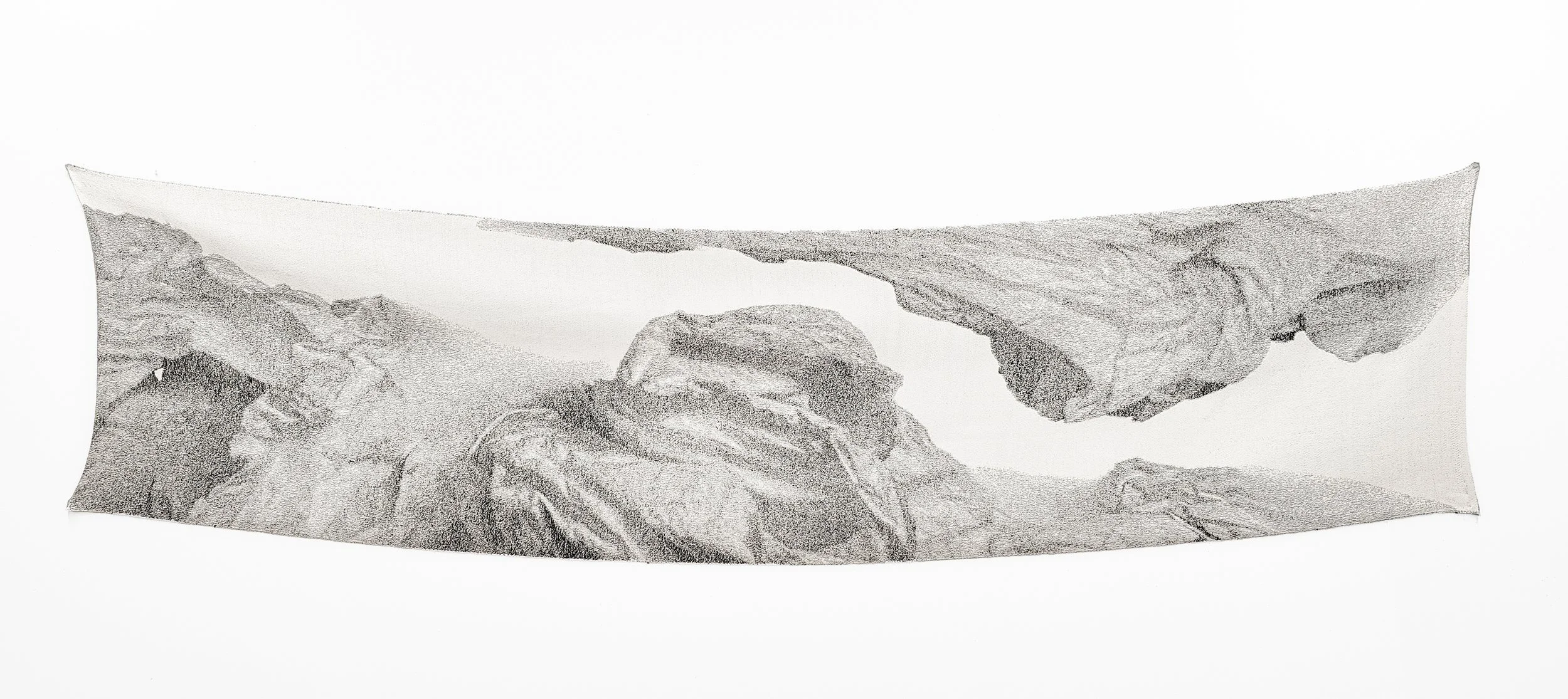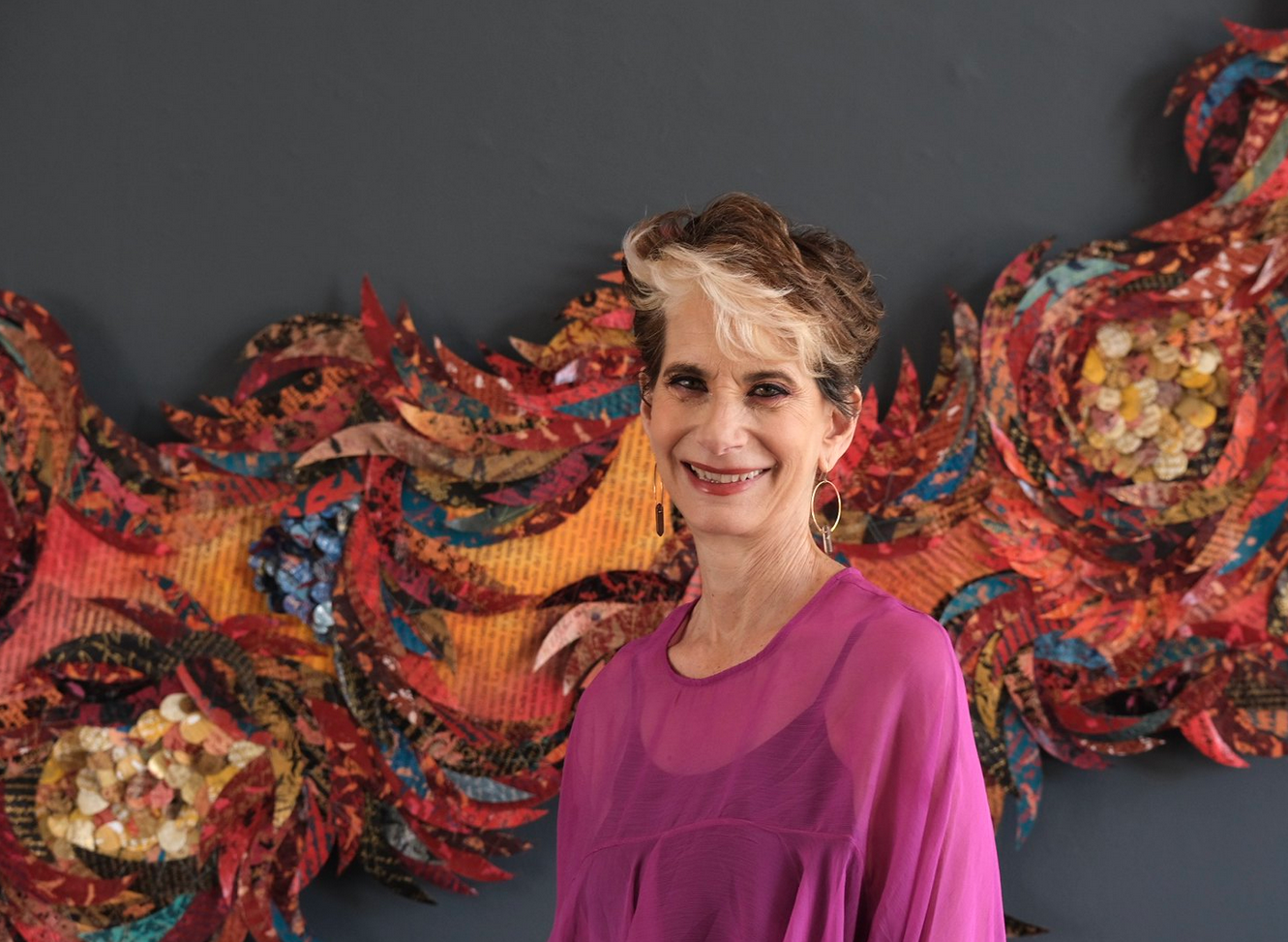10 Questions with Ernest Kankam
Ernest Kankam, aka "BigCedi," was born and raised in Ghana in 1995 and has always had a passion for the arts. He pursued his love of art by pursuing a Bachelor of Fine Arts degree at Ghana's prestigious Kwame Nkrumah University of Science and Technology. Ernest Kankam began his professional artistic journey after his 2018 graduation, experimenting with various mediums and techniques to find his unique voice and style-mediums.
His work is heavily influenced by Ghana's rich culture and history, as well as its socio-politics, and frequently incorporates memories, fantasies, and experiences. His works include paintings, drawings, sculptures, and videos. He experiments with various materials and uses vibrant and colourful images to convey his message.
Ernest Kankam's work can be found in private and public collections around the world, and he has had several solo exhibitions in Ghana and internationally. His recent show "Here Und There" was at the Gray and Gray Gallery in Karlsruhe, Germany. He continues to push the boundaries of contemporary art by experimenting with new mediums and techniques, and his work evolves and inspires.
Ernest Kankam - Portrait
ARTIST STATEMENT
Ernest Kankam is fascinated by image composition. Therefore, his works vary from videos, printmaking, painting, sculptures, and installations. These works are mostly inspired by pop culture, history, and issues in society (both culturally and geographically). In using his subconscious as a muse, he draws from memory and experiences. The works offer second-hand information by the artist with the technique of collage both within the virtual space technological software like Photoshop and physical space use of mundane materials like a mosquito net, thread for sewing, stiff and pieces of coloured fabric. The composition within the paintings is worked on both sides of the surface material first by printing it digitally on Calico fabric and later using other techniques like quilting in sewing, acrylic painting, and fabric collage.
The composition at both ends of the painting reflects each other, and it behaves like a stain of obscured events and experiences within each other. The ‘two sides of the same coin’ mixed media paintings are presented in a structural format to offer a sculptural experience of the painting of the works in the exhibition space. This mode of exhibition tends to continue the past gestures of the 1960’s minimalist quest to subvert the modernist way of pictorial experience of a painting by bringing the painting within the same space of the body present in the exhibition. Here it’s not just about the disembodied eye but rather the whole body reacting with the painting.
INTERVIEW
First of all, introduce yourself to our public. Who are you, and how would you describe yourself as a person and an artist?
Born and raised in Ghana, my name is Ernest Kankam; you can also call me BigCedi. I consider myself an artist without the label of a specific genre because I am an eclectic person with diverse interests. I am fascinated by image production and experimentation. I work with various mediums, for example, photography, digital painting, printmaking, painting, and collage. I recently started working with 3D printing. The theme of my works mostly revolves around fantasies, memories, history, and pop culture.
When did you first realize you wanted to be an artist?
For as long as I can remember, I have been an artist. I, therefore, decided to pursue fine arts when I had the chance to do so in high school.
What is your artistic background? And how did you develop into the artist you are today?
When I was a kid, one of my hobbies was drawing cartoon characters in any medium I could get my hands on. I consistently did well in all art-related classes throughout my whole academic career, such as pre-technical craft and design, painting, and drawing. I worked as an intern at a graphic design company after high school. My interest in printmaking first arose from this. In college, I learned about experimental painting, printmaking, papermaking, photography, and basic sculpture. I became a multidisciplinary artist as a result of using all these methods.
Outer Space (side A), mixed media collage on calico fabric, 50 x 60 in, 2022 © Ernest Kankam
Outer Space (side B), mixed media collage on calico fabric, 50 x 60 in, 2022 © Ernest Kankam
You work with several different mediums. How would you describe yourself as an artist?
You can't keep laughing at the same joke. It's important to seek out channels that can effectively convey my ideas. Most frequently, an idea comes along while mastering a method. This provides me with an incentive to go deeper and come up with something worthwhile. I only recently began studying 3D printing and modeling. This is how I got the idea to recreate cigarette boxes. This object addresses the advertisement for how smoking kills.
And what is the medium you feel more at ease when working with it?
Digital art is easy to create. It doesn't take up a lot of room. Just a laptop and a drawing tablet will do. Printmaking is going to be the second. I enjoy the process the image goes through to end up on a surface.
Plastic filament, glass and acrylic. 6x3x1.5 in, 2022 © Ernest Kankam
Textiles and fabrics are essential in your work; you use them to create quilts and large-format works that almost resemble collages. Can you tell us more about this technique? And why did you choose to work with textiles?
I chose textiles as my printing support when taking printmaking at the university. As a result, I began experimenting with the materiality of various textiles with the intention of incorporating them into the work rather than using them as a support for the print. Michel Foucault's principle of "heterotopia" is related to my understanding of collage in that both involve bringing together disparate elements in a single space or place. In his book "Of Other Spaces," Foucault argues that heterotopias are places that exist in a parallel relationship to the "real" or "normal" spaces of society and that they often function as a kind of mirror or reflection of those spaces. Collage, on the other hand, is an art form that involves the combination of different images, textures, and materials to create a new, unified whole. Various materials are employed to intrigue the viewer's understanding of the structure, meaning, and space.
At the same time, collage as a technique is a recurring theme in your production, and your work is a mix of different patterns and colors. What do these patterns represent? And what messages do you want to convey through them?
Drawing society's attention to something in a distinctive way with the intention of inspiring is one of our goals as artists. The majority of the patterns in my artwork are taken from my surroundings, for instance, colourful fabrics termed "African prints." Sourcing from different spaces is the best way to communicate my imagination. To provoke thought in my audience, I use iconography in my compositions. Another role I want my work to play is this one.
Water Buddies (side A), mixed media collage on calico fabric, 50 x 60 in, 2022 © Ernest Kankam
Water Buddies (side B), mixed media collage on calico fabric, 50 x 60 in, 2022 © Ernest Kankam
African art is gaining significant popularity, both locally and internationally. How do you promote yourself and your work?
Definitely true. If contemporary art is the art of today, then it is very important for art from different cultures to be shared equally. People still don't understand what Ghanaian art looks like in other nations. So, in the hopes that they will show my work, I send my portfolio to art institutes. Finally, I want to express my gratitude for the opportunity to further promote myself by having this interview on your fantastic platform.
Do you have any show or collaboration you are looking forward to in the near future?
I'm planning a paper-based duo exhibition in Germany with another artist. Conrad's work is some sort of mixture of embossed paper, like reliefs, and analogue printmaking. My work takes a less conventional approach to paper as a medium. It's a collage of spaces from Germany and Ghana made with silk screen printing, painting, and paper quilting. I have an artist residency with the Gray and Gray Gallery and a solo exhibition in the last quarter of the year.
And lastly, what is your biggest goal for 2023?
2023 is a year for three major things. WORK, EXHIBIT, and REPEAT. So, stay tuned.




















